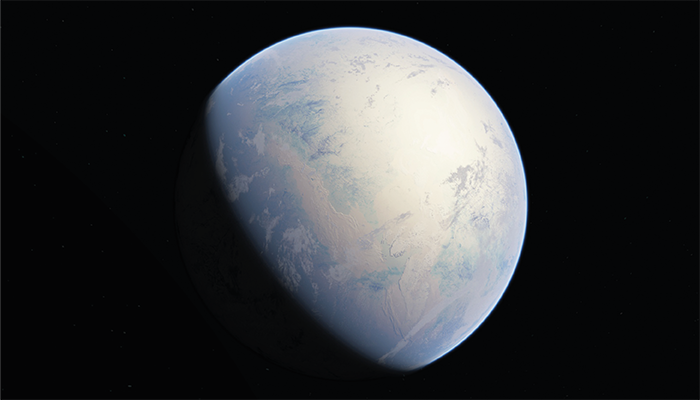
Credit: Oleg Kuznetsov, CC BY-SA 4.0, via Wikimedia Commons
A study of sandstone formations in Colorado's Rocky Mountains has provided new support for the "Snowball Earth" hypothesis – a theory suggesting the Earth was submerged by a glacial layer down to the equator hundreds of millions of years ago. The study, conducted by researchers at the University of Colorado, focused on sandstone ridges and dikes in the Front Range that showed signs of fluidized sediment injection, a process linked to subglacial meltwater events.
Using in-situ hematite U-Pb dating, the team attributed the formation of sandstone injectites (sand-filled fractures) to approximately 690 to 660 million years ago. These formations, known as Tava sandstone, are believed to be remnants of subglacial meltwater events from the Sturtian glaciation, providing evidence for the Snowball Earth hypothesis. The precise dating was achieved with high-resolution laser ablation-inductively coupled plasma-mass spectrometry (LA-ICP-MS), which allowed the team to accurately pinpoint the timing of sandstone injections associated with periods of increased pressure from subglacial fluids.
By integrating field observations with geochronological data, the team identified multiple pulses of sand injection associated with glacial meltwater generation, likely driven by rifting and geothermal heating. These injectites display crosscutting relationships within hematite veins, indicating complex interactions between fluidized sediment and the bedrock beneath ancient ice sheets. According to the crosscutting principle – which states that any geological feature that cuts across another must be younger than the feature it disrupts – these injectites likely formed from recurrent glacial melt events.
Confocal laser scanning microscopy (CLSM) and scanning electron microscopy (SEM) were employed to examine these crosscutting relationships, confirming that the injections were indeed sequential.
The team is eager to identify similar formations across North America. "We want to get the word out so that others try and find these features and help us build a more complete picture of Snowball Earth," said co-author Liam Courtney-Davies in a press release. "We have to better characterize this entire time period to understand how we and the planet evolved together."
Sidenote: The term “Snowball Earth” was first introduced by American geologist Joseph Kirschvink in a 1992 paper that suggested the Earth's oceans and landmasses may have been nearly entirely covered by ice during at least two extreme glaciations between 2.4 billion and 580 million years ago.




